I have been trying to import and display an fbx file using the FBX SDK.Untill. I managed to load in the file, but I got stuck at the part where I have to display it.
The questions:
- What exactly are those indices?
- How should I display the vertices?
Here is the class that I made:
3dModelBasicStructs.h
struct vertex
{
float x,y,z;
};
struct texturecoords
{
float a,b;
};
struct poligon
{
int a,b,c;
};
Model.h
#ifndef MODEL_H
#define MODEL_H
#define FBXSDK_NEW_API
#define MAX_VERTICES 80000
#define MAX_POLIGONS 80000
#include <fbxsdk.h>
#include "3dModelBasicStructs.h"
#include <iostream>
#include <GL/glut.h>
using namespace std;
class Model
{
public:
Model(char*);
~Model();
void ShowDetails();
char* GetModelName();
void SetModelName( char* );
void GetFbxInfo( FbxNode* );
void RenderModel();
void InitializeVertexBuffer( vertex* );
private:
char Name[25];
vertex vertices[MAX_VERTICES];
poligon poligons[MAX_POLIGONS];
int *indices;
int numIndices;
int numVertices;
};
#endif
Model.cpp
#include "Model.h"
Model::Model(char *filename)
{
cout<<"\nA model has been built!";
numVertices=0;
numIndices=0;
FbxManager *manager = FbxManager::Create();
FbxIOSettings *ioSettings = FbxIOSettings::Create(manager, IOSROOT);
manager->SetIOSettings(ioSettings);
FbxImporter *importer=FbxImporter::Create(manager,"");
importer->Initialize(filename,-1,manager->GetIOSettings());
FbxScene *scene = FbxScene::Create(manager,"tempName");
importer->Import(scene);
importer->Destroy();
FbxNode* rootNode = scene->GetRootNode();
this->SetModelName(filename);
if(rootNode) { this->GetFbxInfo(rootNode); }
}
Model::~Model()
{
cout<<"\nA model has been destroied!";
}
void Model::ShowDetails()
{
cout<<"\nName:"<<Name;
cout<<"\nVertices Number:"<<numVertices;
cout<<"\nIndices which i never get:"<<indices;
}
char* Model::GetModelName()
{
return Name;
}
void Model::SetModelName(char *x)
{
strcpy(Name,x);
}
void Model::GetFbxInfo( FbxNode* Node )
{
int numKids = Node->GetChildCount();
FbxNode *childNode = 0;
for ( int i=0 ; i<numKids ; i++)
{
childNode = Node->GetChild(i);
FbxMesh *mesh = childNode->GetMesh();
if ( mesh != NULL)
{
//================= Get Vertices ====================================
int numVerts = mesh->GetControlPointsCount();
for ( int j=0; j<numVerts; j++)
{
FbxVector4 vert = mesh->GetControlPointAt(j);
vertices[numVertices].x=(float)vert.mData[0];
vertices[numVertices].y=(float)vert.mData[1];
vertices[numVertices++].z=(float)vert.mData[2];
cout<<"\n"<<vertices[numVertices-1].x<<" "<<vertices[numVertices- 1].y<<" "<<vertices[numVertices-1].z;
this->InitializeVertexBuffer(vertices);
}
//================= Get Indices ====================================
int *indices = mesh->GetPolygonVertices();
numIndices+=mesh->GetPolygonVertexCount();
}
this->GetFbxInfo(childNode);
}
}
void Model::RenderModel()
{
glDrawElements(GL_TRIANGLES,36,GL_INT,indices);
}
void Model::InitializeVertexBuffer(vertex *vertices)
{
glEnableClientState(GL_VERTEX_ARRAY);
glVertexPointer(3,GL_FLOAT,0,vertices);
//glDrawArrays(GL_TRIANGLES,0,36);
}
Sadly , When i try to use drawelements i get this error: Unhandled exception at 0x77e215de in A new begging.exe: 0xC0000005: Access violation reading location 0xcdcdcdcd.


